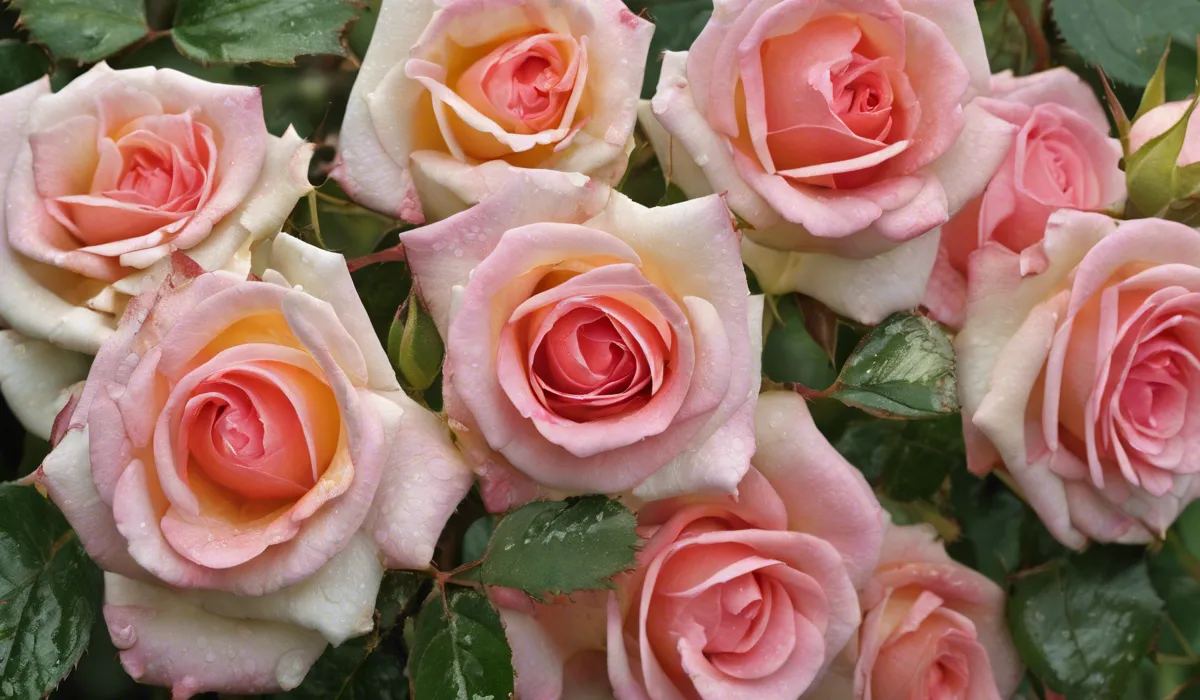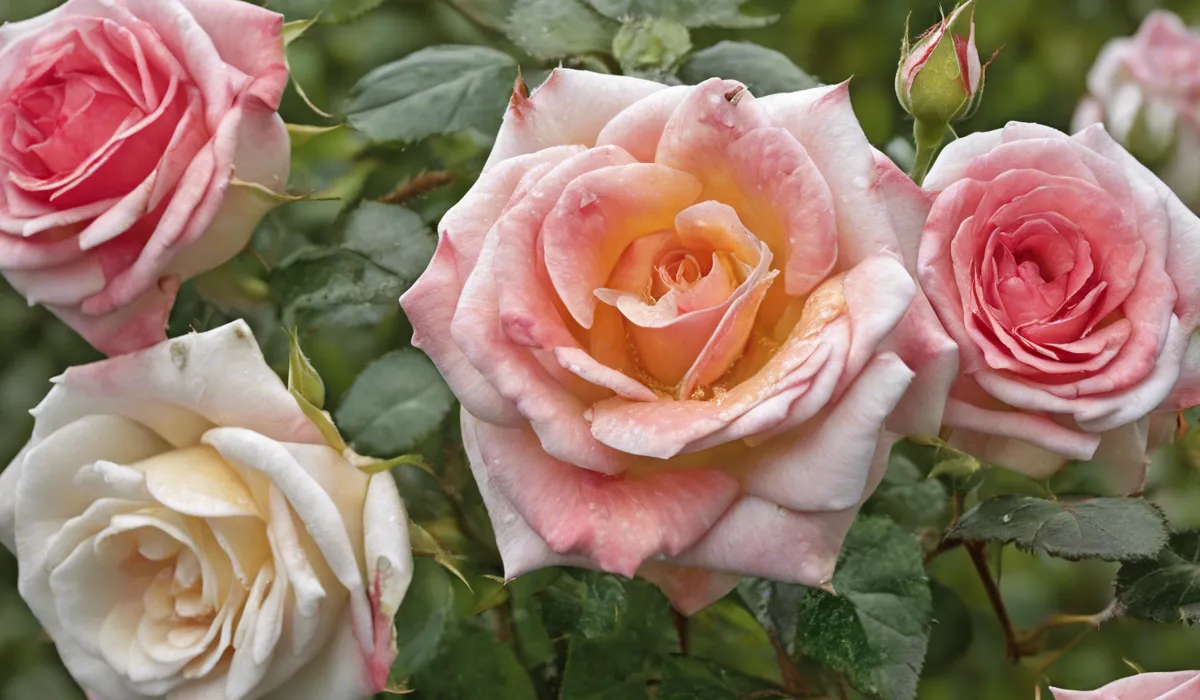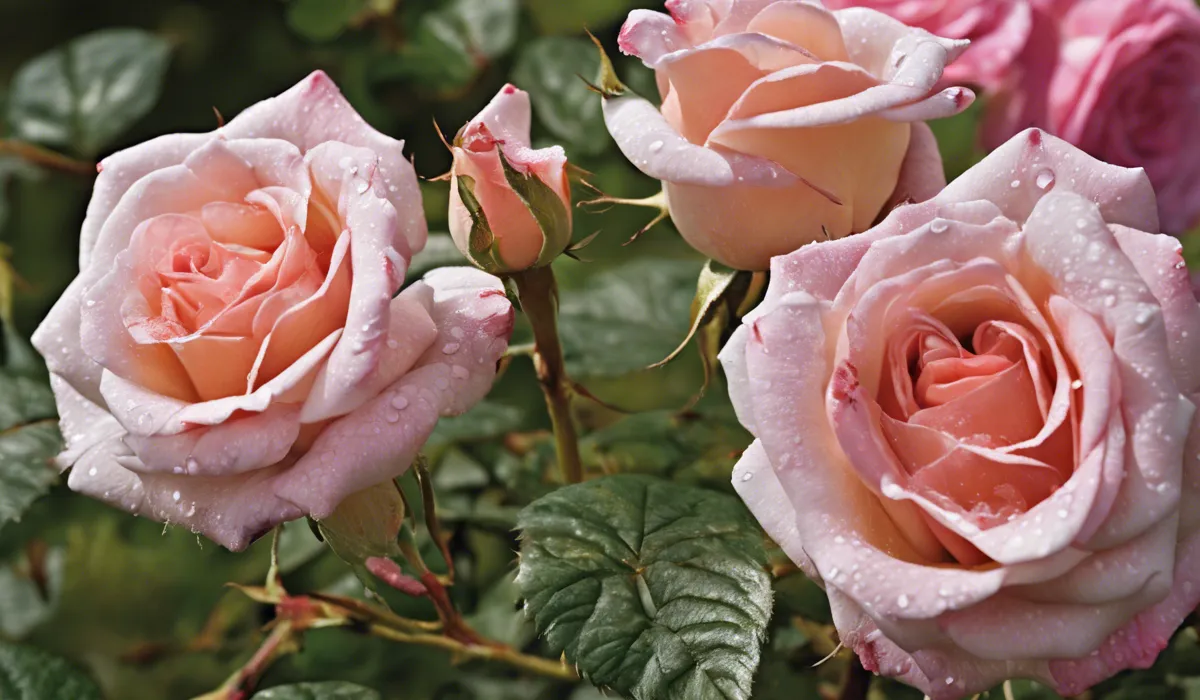Powdery mildew on roses is caused by the fungal organism Podosphaera pannosa. Warm, dry days and cool, humid nights create ideal conditions for its growth. Poor air circulation and overcrowded plants can also contribute to its development.
Causes of Powdery Mildew on Roses

Fungal Pathogen
Powdery mildew on roses is primarily caused by an unwelcome guest, the fungus known as Podosphaera pannosa.
This particular fungus is a specialist in invading the surfaces of rose leaves, stems, and buds, coating them in a white, powdery film. Its presence signals a struggle for the plant, as it competes with the fungus for vital nutrients.
Conditions Favoring the Fungus
The battle against powdery mildew is often lost when environmental conditions favor the fungus. High humidity, especially when coupled with warm days and cool nights, provides the perfect breeding ground for this pathogen.
Compounding the problem is poor air circulation, which can be caused by planting roses too close together or in sheltered areas where air becomes stagnant.
Host Susceptibility
Not all roses are created equal in the eyes of powdery mildew. Some varieties display a higher degree of susceptibility due to factors such as dense foliage that traps moisture, a lack of plant vigor, or a genetic predisposition that leaves them vulnerable to attack.
Gardeners must be aware of these characteristics when choosing roses for their gardens.
Spread and Transmission of Powdery Mildew

Spore Dispersal
The tiny spores of powdery mildew are adept at traveling. They take to the air with ease, riding on currents to find new hosts.
Insects, too, can transport these microscopic hitchhikers, while splashing water from rain or irrigation can fling them onto nearby plants.
Plant-to-Plant Transmission
Once powdery mildew establishes a foothold on a plant, it doesn’t take long for it to spread to nearby roses.
The fungus can easily move from an infected plant to a healthy one through direct contact, and sometimes we humans unwittingly help it along, transferring spores on our hands, tools, or clothing.
Overwintering of Fungus
Even when the growing season ends, powdery mildew does not simply vanish. It is capable of overwintering in fallen leaves or on plant debris.
As the new growing season begins, the fungus takes advantage of the fresh, young foliage to start its lifecycle anew.
Preventative Measures and Control Strategies

Cultural Practices
Implementing good cultural practices is the first line of defense against powdery mildew. Proper spacing allows air to circulate freely around each plant, reducing humidity and the potential for fungal growth.
Pruning is equally important, as it removes excess foliage and opens up the plant to light and air. Moreover, selecting rose varieties known for their resistance to powdery mildew is a wise choice for any gardener.
Chemical Control
When cultural methods fall short, chemicals can come to the rescue. Fungicides are available to control powdery mildew, but their effectiveness hinges on timely and proper application.
It is essential to follow label instructions carefully and to apply the fungicide before the disease becomes widespread.
Organic and Home Remedies
For those seeking alternatives to chemicals, organic and home remedies offer a beacon of hope.
A simple baking soda solution can create an inhospitable environment for powdery mildew, while milk sprays have been touted for their fungus-fighting properties. These natural measures can be an integral part of an organic gardener’s toolkit in the fight against powdery mildew.
FAQs About Causes of Powdery Mildew on Roses
What fungal organism is responsible for powdery mildew on roses?
The fungal organism that causes powdery mildew on roses is Podosphaera pannosa.
What weather conditions promote the growth of powdery mildew on roses?
Warm, dry days and cool, humid nights create the ideal conditions for the growth of powdery mildew on roses.
How does air circulation affect the development of powdery mildew on roses?
Poor air circulation can contribute to the development of powdery mildew on roses.
Can the way roses are planted affect the likelihood of powdery mildew?
Yes, overcrowded planting can lead to poor air circulation, which can in turn contribute to the development of powdery mildew.
Is there a specific time of day when powdery mildew tends to thrive on roses?
Powdery mildew tends to thrive during warm, dry days and is further supported by the cool, humid conditions often present at night.
Final Thoughts
Powdery mildew on roses is triggered by Podosphaera pannosa, a fungus thriving under specific climatic conditions, notably warm days and cool, moist nights.
The risk of infection increases when roses are planted too closely, leading to inadequate air circulation, which is crucial in preventing the disease’s spread and establishment.
